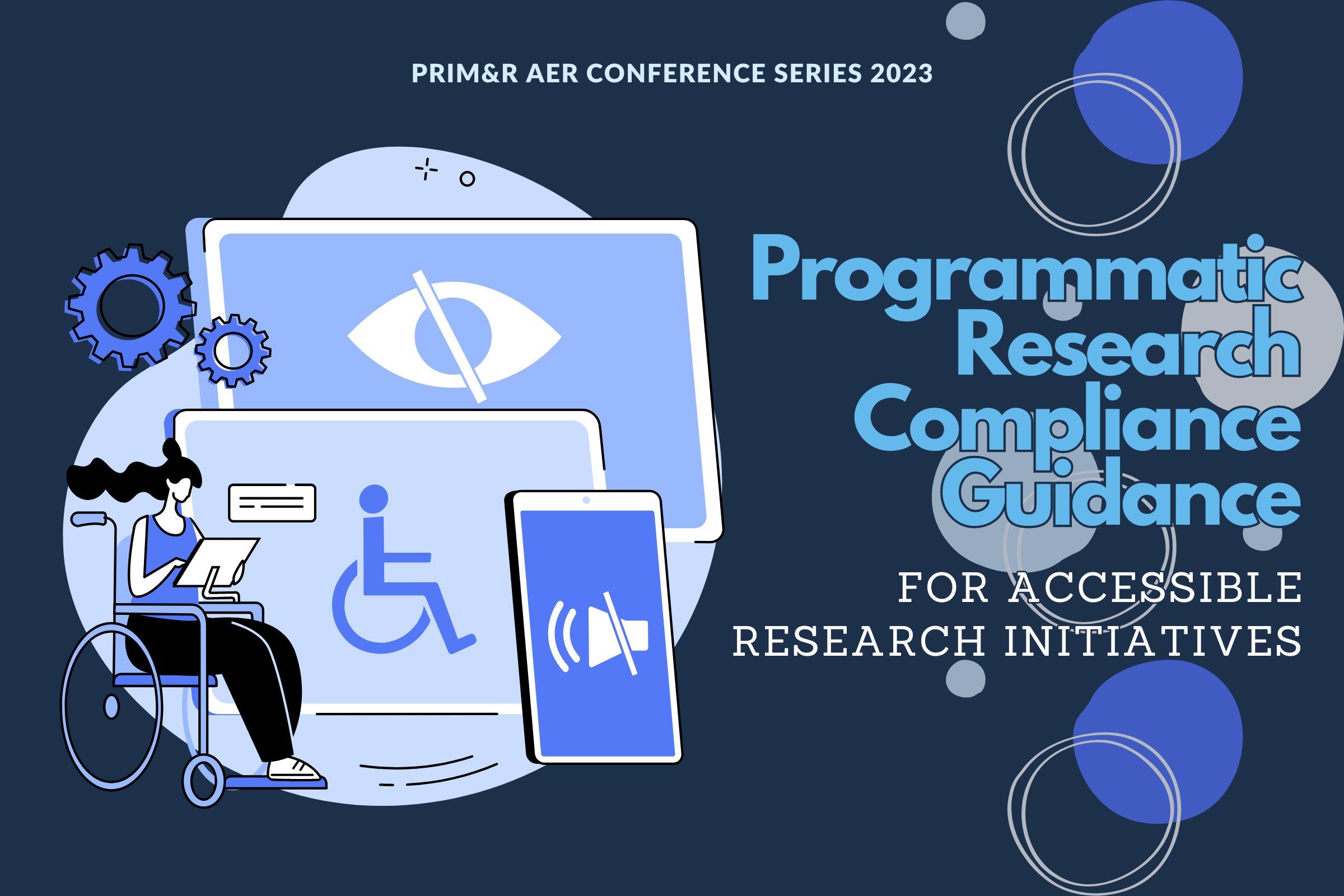The 2023 Advancing Ethical Research (AER23) Virtual conference is hosted by Public Responsibility in Medicine and Research (PRIM&R) “works to ensure the highest ethical standards in research by providing education and other professional resources to the research and research oversight community.”
Cassidy Iervasi, M.A. & Myra Luna Lucero, Ed.D. presented a poster at AER23 entitled “Programmatic Research Compliance Guidance for Accessible Research Initiatives Poster” on designing ethics educational materials that are accessible for everyone.
Implementing Accessibility Program Goals
- Create researcher-centered guides to support accessible study design creation
- Provide research compliance support for researchers to develop accessible participant materials (e.g., clear consent forms, recruitment materials, etc.)
Approach: Accessibility Benefits Everyone
- Consider and Reflect
- Think of your audience and consider accessibility
- Use clear and simple language
- Organize content with alternative text descriptions
- Tailor content for individual needs (e.g., semantic HTML tags)
- Seek Feedback from Colleagues
- Ask coworkers for feedback develop a work flow that fosters accessibility in document design and presentation
- Identify common areas where document designs can improve upon accessibility
- Consult Experts
- Consult with an Accessibility Office and follow their guidelines for document creation
- Weave in these guidelines into typical work flows with checklists and quality assessments
- Focus Group Feedback, Pilot-Test, or Trial Run
- After a document is vetted, seek feedback from the intended audience. For quality assessment, ask questions like:
- Is this document clear, understandable, and useful
- Are the materials presented in a way that you would expect, did you encounter any problems with the materials
- Recognize Design Limitations
- Documents may never be 100% accessible
- Identify areas where accessibility is at the highest standards possible while considering workload, software availability, and timeline limitations
- Publish Materials and Revisit or Revise Them
- Publish materials and seek feedback from the audience
- Revisit documents as new technology may enhance accessibility
- Quality assess and cross check designs across time and aim to improve upon them or revise them
